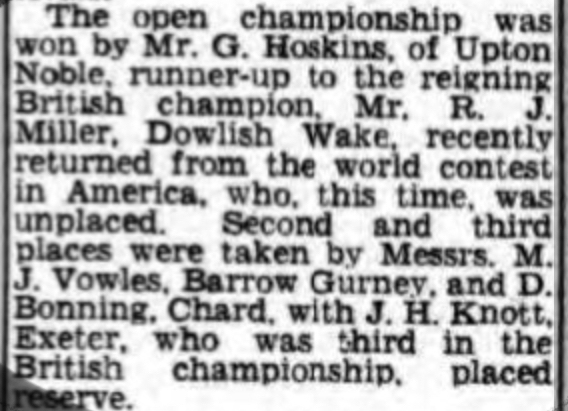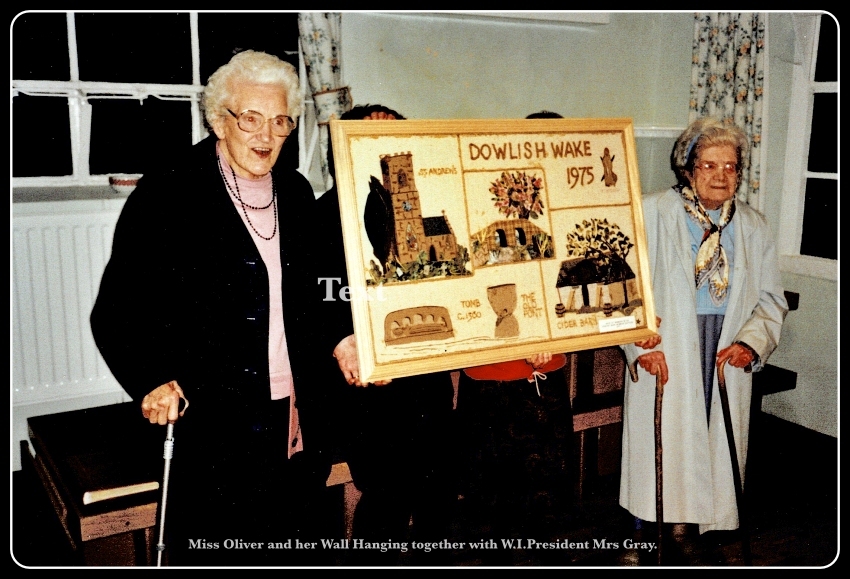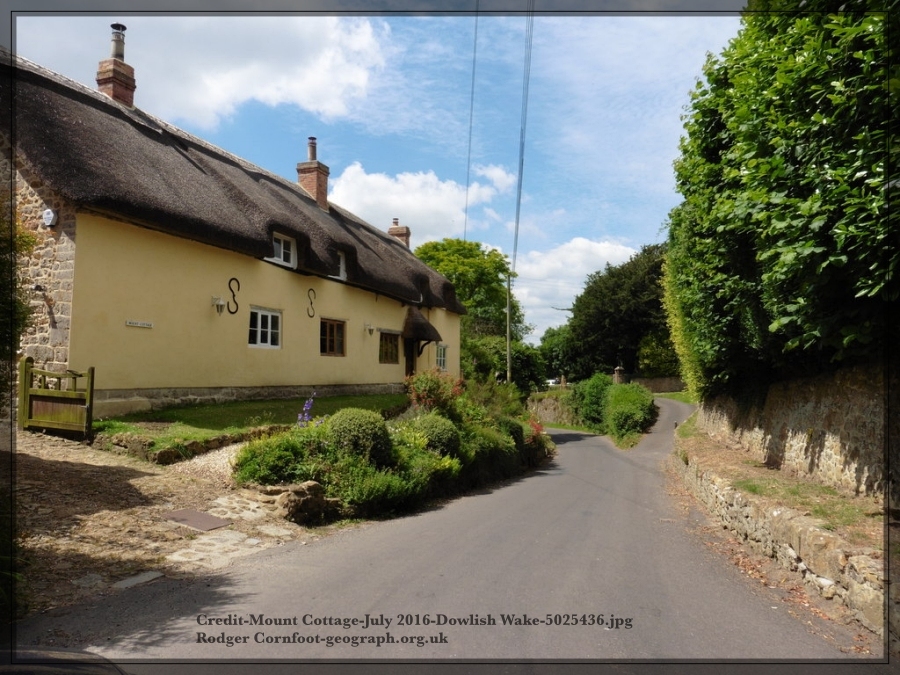The Mount
With its thatched roof, The Mount lends itself beautifully to the promise that is Dowlish Wake, a delightful village in a quiet corner of Somerset. Visitors descend the winding lane from Kingstone and thread their way through steeply embanked verges under the overhead branches known locally as ‘The Holloway’. Just after the corner lies Mount Cottage. It sits on a high bank looking across to St Andrews church and churchyard. Looking back to Mount Cottage from the churchyard, the view echoes a scene from the year 1864, that of the funeral of the famous explorer John Hanning Speke.
Inside the Speke Chapel within St Andrews church is the black and brown marble sarcophagus of John Hanning Speke. His funeral was attended by explorer David Livingstone. In 1857, the Royal Geographical Society sent John Hanning Speke of Jordans to search for the equatorial lakes of South Africa. While travelling alone, he discovered the Victoria Nyanza, believing it to be the headwaters of the Nile. Later, in 1864, while partridge shooting on a friend’s estate, he accidentally shot himself.
The Mount; Lot 1 of the Manor Estate Auction
The Mount, also known as Mount Cottage in recent years, was once part of Dowlish Manor Estate, the land upon which was once thought to hold a monastery. Village archives suggest it supported monks on the estate farm. Otherwise, Dowlish manor was held by Alward until 1086 when tenant William de Moncels worked the land for the Bishop of Coutances in Normandy. By the 12th century, held by the Wake family. Later, passing through marriage to the Speke’s. They occupied Manor Farm, next to Dowlish church, before moving to Whitelackington early in the nineteenth century.
In 1920, the Dowlish Manor estate was broken up, with the auction sale in Ilminster. This brought many changes to the village, although W H Speke ensured that, in many cases, the tenants could purchase the property they had rented.
Sale & Auction Details
Dowlish Manor Estate, Somerset.
Sale by Auction at the George Hotel, Ilminster.
Messrs. C. R. Morris, Sons and Peard.
On 16 March 1920, at 2 p.m., Lots 1 to 35.
The Estate sale raised £64,253.
Lot 1, Dowlish Manor Farm
Cottages; Five Workmen’s ‘Good’ Cottages included in Lot 1.
These five cottages all close to the homestead and with good accommodation and gardens.
Details;
Pt. 45 Two Cottages and Gardens – The Mount
Pt. 55 Two Cottages and Gardens adjoining Reading Room [lot 32]
The fifth cottage was adjoining Castle Inn at Kingstone.
The tenants of lot 1 are shown as Messrs. J & L Broughton & others.
Tenants of Pt. 55; A Perry & J Bulgin.
The 'Sales Particulars' map shows the Mount as three cottages next to Glebe cottage.
Lot 1, Dowlish Manor Farm Agricultural Estate.
The Residence [Manor House]
The Residence occupying an elevated position about 250ft above sea level.
Front Entrance, Entrance Hall, Dining Room and Drawing Room.
Front and Secondary Staircases lead to 6 Bedrooms, one with oak beamed ceiling.
Housemaids Pantry and Kitchen with cupboard, Scullery fitted with sink and water supply'=.
Dairy and Wash-house with sink and water supply.
The rooms are chiefly fitted wtih Tiled Grates and Mantels.
Windows are most picturesquely situated on an eminence close to the Church, secluded by deciduous and coniferous trees.
Surrounded by Flower and Grass Lawns with a Walled Kitchen Garden and spacious Court Yard.
The Farm Buildings
The Farm Building are elaborate with extensive and conveniently planned.
Stable for 3 horses.
Coal store, Store house and baking oven with Loft over.
Loose box and Loft. A Granary. A range of calve pens. Hay house. Cow Stall for 30 cows.
Barn with Corn Hutches and Loft. Loose Pens. Potato & Ash house.
Spacious Rick Yards and Cattle Bartons.
The Homestead
The Homestead consisted of a House, Barton, Outbuildings, Garden and Orchard.
The scene at the auction saw bidding brisk with keen competition. However, 3 lots remained unsold.
Overall, Lot 1 raised £14,900, plus £220 for timber.
Lots unsold.
The following cottages, unsold, ‘not a single bid forthcoming’.
Lot 12, ‘Wallbridges’ Cottages [2] ’
Lot 14, ‘Pitmans’ Cottages [3].
Lot 18, Three Cottages and gardens. [Corner Cottage, Byways and Nestledown]
Utilities – Water
Mount Cottage fortunate with a well and pump.
Earlier, villagers used springs and river water for general household chores with drinking water from farm or neighbours' wells. Only the larger houses had wells and hand pumps, and some had the luxury of washing boilers.
Wells with pumps: Old Rectory, The Mount, Lower Farm, Higher Farmhouse, Old Parsonage (probably Bryants), Wayside Cottage, Lower and Higher Wallbridge. In the 1920s, the last well was dug at Glendale.
In 1920, the supply was mainly from springs and two rams. The Mount and The Rectory are mentioned as benefiting early from the installation of this supply. It originated from Ilminster via Cudworth Woods at Windwhistle. It was then pumped to the Kingstone, Pretwood reservoir near 'Gallows Down'. One ram was installed in the pumphouse in Oxbarton plantation near Bryants.
Around 1931, Chard Rural Council installed piped water in some Dowlish Wake houses for those who could afford it. Other cottages relied on water-stands situated at various locations on the village roadside. The village ‘Pumping station’ stood outside the old blacksmith shop in 1925 – now Perry’s office, the equipment removed around 1950. Several base parts of these pumps still exist around the village. Cricket Malherbie had the same ram system with the tank building existing in Cricket Lane, and at Cricket Cross in the hedgerow, the stone artefact with an inscription.
Anecdote: An old resident remembered that he always had to fetch water for his mother to wash and bathe, etc. (He was Instructed to aim the bucket at the bottom of the river, where it was cleaner). The water was heated outside in a boiler and then carried into the house.
Various occupiers of The Mount/ Mount Cottage.
Built late 15C to early 16thC
1838 Tithe Map - Joseph Duke occupier of plot 24 [house & garden] [The Mount]
1838 Tithe Map - Joseph Duke occupier of plot 25, [house & garden] [The Mount]
Joseph Duke Esq. later of Parke House, Farmer and Land owner. His family in 1976 founded the 'Heritage of the Isle Trust', being Ilminster Solicitor's since 1848 and having accumulated a "mountain of documents", these piled in the office attics.
1902 & 1906 Henry Chick. Dowlish Farm Cottage [Dowlish Wake Polling District]
Henry Chick born in the village, Cattle Man and later Shepherd, moving to Dinnington in later life. Others in his family far a field in Saskatchewan in Canada
1939 -1945 The Mount; Dick Miller [source, Perry’s notes]
Dick Miller the village Ploughing Champion, prizes a plenty up and down the country. Not only Ploughing Champion of Britain but in 1957 he travelled to Ohio in the USA to represent Britain in America.
1939 -1945 Church Hill; F Dade [source, Perry’s notes]
Frederick Dade, Cowman, later in Wallbridge farm
1960s We were told that in the 1960s, ‘The Mount divided into two cottages, The Mount and the smaller one, Church Hill.
1983 The Mount Cottage resident George Percival Oliver remained there until 1993. Records show his burial in St Andrews, Dowlish Wake, in August 1983, aged 86.
The gravestone records a church Organist for 65 years and mentions two sisters.
George had two sisters, one of which was Marjorie Nellie Townsend [1901-1989]. The other Ena Mary Oliver [1912-2009]. A war record for George shows his service during WWI. A Rifle-man of the 18thBattalion, London Regiment, sadly injured,
5 September 1916, aged just 19. Thence was discharged unfit for war service.
The 1985, 1987, and 1989 'Clock Records' record the sisters at The Mount Cottage.
One of the sisters, Miss Oliver, produced a handmade wall hanging during her years in the village Women's Institute, which can be seen in Speke Hall.
We were told the tale of an unnamed former resident who purchased the property. He was under the impression that the smaller portion of the cottage would soon become vacant due to the advanced years of the woman whose home this was. But she lived on and on—he died first!
1992 The Mount is believed to have changed hands and converted to one dwelling.
Previous occupants - unknown dates; Laycock, Perters, Crowdy and Cannon.
Glebe Cottage is the next-door property; in 1939, the occupant was Mrs Vickery. Then, in 1986, Ken repaired a clock for Mrs N Sheppard at Glebe Cottage].
Sources
Village archives
Monastery: Village notes collected by Mrs M Perry suggest that a monastery once stood on or near Dowlish Manor Estate farm, with monks making Dowlish their home. We have seen nothing to substantiate this.
George Percival Oliver organist; St Andrews Churchyard Memorial Stone. Wartime Record Online; Subscription website, ancestry.co.uk -UK Pension Records 1914-1920. & National Probate Calendar 1858-1995.
Sisters Townsend & Oliver. Source; K Cattley, Clock repairs & photograph of wall hanging.
Glebe Cottage 1986 for a Mrs N Sheppard. Source;
Sale of Dowlish Manor Estate Source: Newspaper clipping & Perry’s notes.
Tale of unknown resident and his long wait for adjoining tenant to vacate Mount Cottage; source C & K Cattley.
To accompany this social history there is the comprehensive ARCHITECTURAL HISTORY of Mount Cottage compiled by Nigel Paterson.
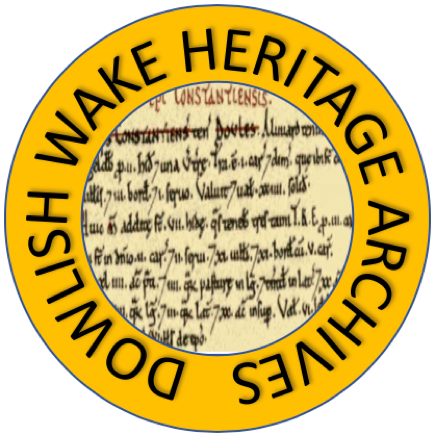
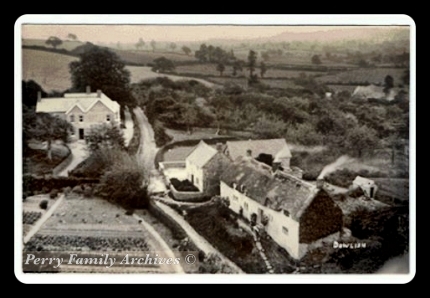


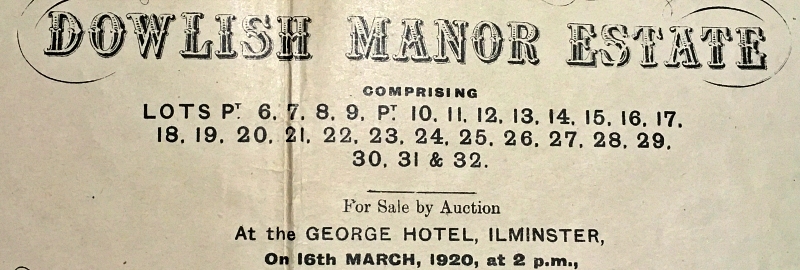
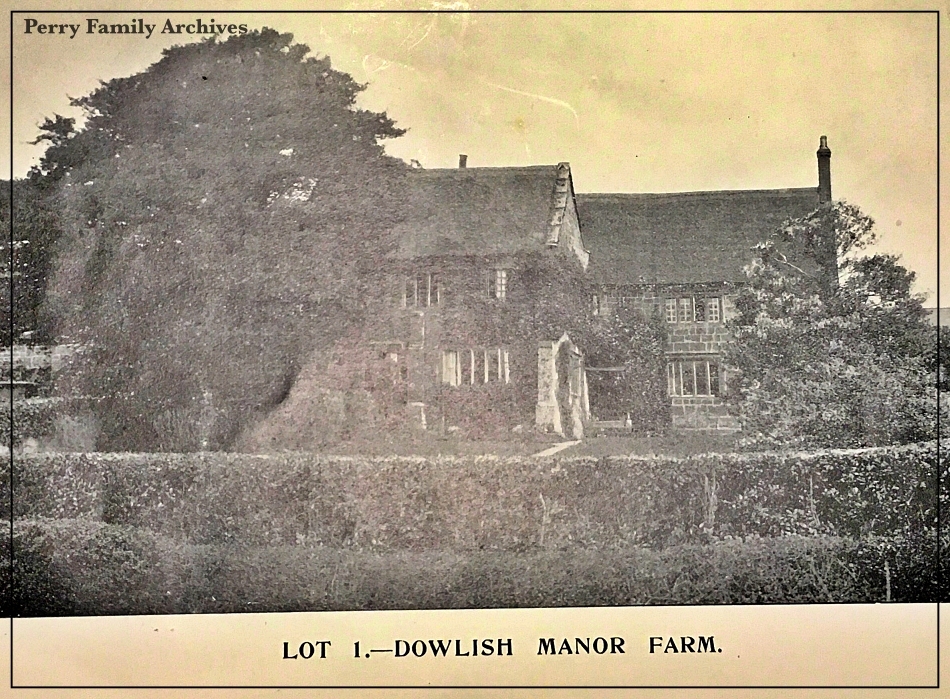
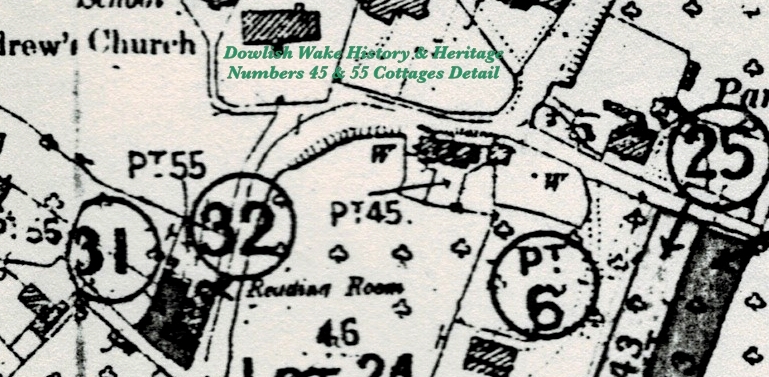
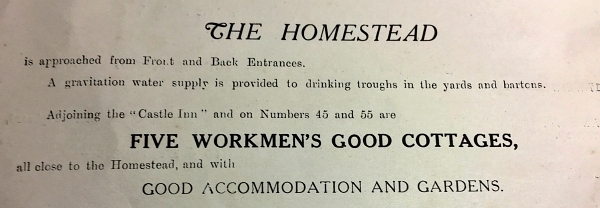
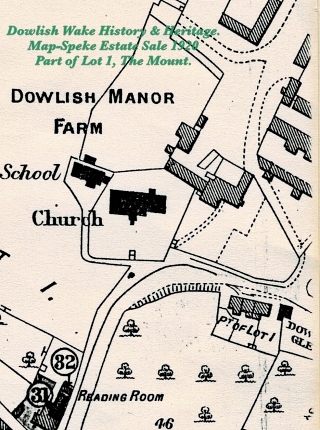
![Old Water Pump [one of several in Dowlish Wake] Old Water Pump [one of several in Dowlish Wake]](/dowlish-wake-heritage/assets/images/old-water-pump-one-of-several)
